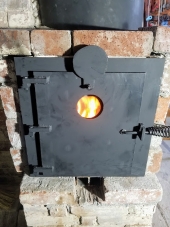

 2
2




 8
8




Where there is Liberty, there is Christ!

 3
3




 2
2




Where there is Liberty, there is Christ!





 2
2




Where there is Liberty, there is Christ!
 2
2





 3
3




Actually, no. Birch bark and sod was the main roofing material in a lot of areas in Scandinavia all the way to the beginning of the 1900s. A good sheet of birch bark is completely waterproof, and basically doesn't degrade unless exposed to UV light (besides being insulation, the main function of the sod in a sod roof is to prevent light from reaching the bark). This kind of roof will stay leak-proof for decades or more (according to Wikipedia, 30 years was once considered the "normal lifespan" of a sod roof before it had to be re-done. However, I also read a manual on building a Sami "gamme" where it was claimed that a well-laid sod roof with birch bark will stay sound for a century or more...) The main reason it fell out of favour was that it's quite labour-intensive to build, compared to modern roofing materials.Thomas Tipton wrote:Whereas your birch bark will eventually capture and entrain moisture, and eventually decay, a polyethylene vapor barrier will not. [...]You must understand that to be a "Vapor Barrier" the material must be relatively impenetrable to moisture and not have any voids in it. I'm afraid your roof, while historically accurate, will leak without one.
William Bronson wrote:If the platform the rocket is built on is large stones in a similar manner, I think it also will be fine.
 3
3




Where there is Liberty, there is Christ!
 4
4





 2
2




Thomas Tipton wrote:As far as water wicking, and post rot, have you looked into the practice of charring the wood and setting it on a stone?
Good to hear! Well, I do have a tendency to overthink things, and perimeter vents are a lot easier to build than active ventilation. We are in coastal Norway, so our air will never be very cold or dry, but I doubt traditional houses in our area had active ventilation... Suppose simpler might be better.Glenn Herbert wrote:With the amount of raised rock/gravel fill, and setting everything on large flattish stones, I think you will have no moisture issues as long as you end up with good roof overhangs and exterior drainage management. I see no need to add active ventilation to the subfloor; a couple of perimeter vents as you described will do fine. If you are in Finland, your air will be quite cold and thus hold very little moisture in absolute terms.
 1
1




Where there is Liberty, there is Christ!






|
Of course, I found a very beautiful couch. Definitely. And this tiny ad:
Freaky Cheap Heat - 2 hour movie - HD streaming
https://permies.com/wiki/238453/Freaky-Cheap-Heat-hour-movie
|







